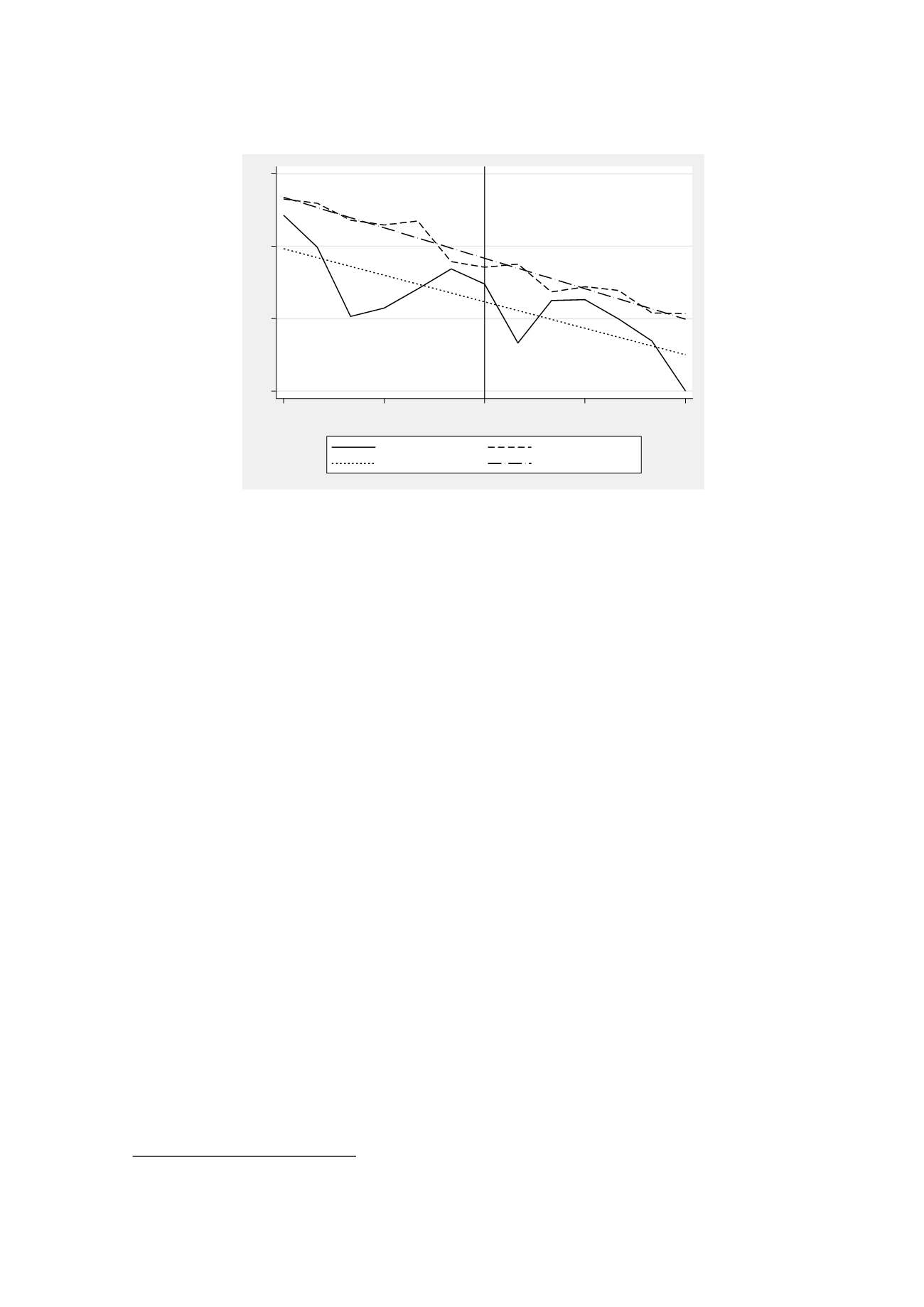
19
Figure 7:
Log average days in inpatient care at 50-54 years of age and estimated linear trends;
period 1987-1999; the estimated slopes of the trend are -0.0611 and -0.0701 for military and
non-military, respectively
Given the extent of studies examining the effects of unemployment on health, the main
reason for studying the effect of timing of early retirement on health is that it potentially
measures something other than the effect of unemployment on health. One such
important difference is that in contrast to being unemployed there should be small or
non-existent effects on income of early retirement. For this reason we examine the
effects on disposable income for the studied cohorts of military and other civil servants.
hows ordinary least squares (OLS) estimates of
from the estimation of:
,
a
= 59,…,70,
(5)
where
is disposable income of individual
i
at age
a
.
22
The estimates of
are thus the difference-in-difference estimates for each age from 59–70 years of age.
From this figure we can see some reform effects on disposable income in ages 59
through 61. However, the effects are relatively small. We find a statistically significant
reduction in disposable income, by 20,000 SEK (2,324 Euro) at ages 59-60 and 10,000
SEK (1,162 Euro) at age 61. These represent a reduction by about 10 and 5 percent,
respectively. At all other ages there is no effect on disposable income. The early
retirement program studied here left the retirement income value at normal retirement
22
Note that we have data on disposable income from 1990 and onwards. As a consequence, the age span for model
(5) is restricted to starting from age 59, since the oldest birth cohort (born 1931) was 59 years old in 1990.
-1.5
-1
-.5
0
1987
1990
1993
1996
1999
year
Military 50-54
Non-military 50-54
Linear prediction
Linear prediction


